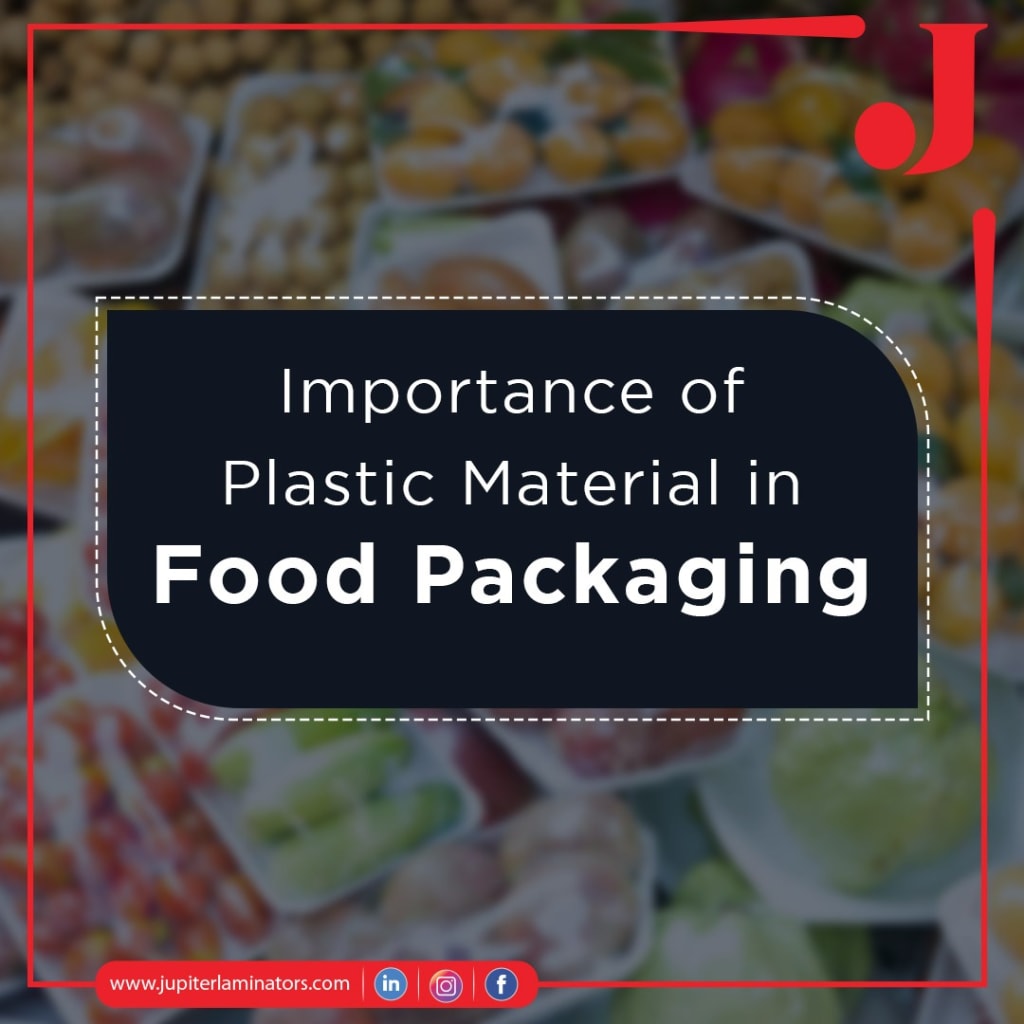Importance of Plastic Material in Food Packaging
Food Packaging

There are two major classes of plastics: thermosets and thermoplastics. Thermosets are polymers that solidify or set irreversibly once heated and can't be remolded. As a result of they are robust and sturdy, they have a tendency to be used primarily in cars and construction applications like adhesives and coatings, not in food packaging applications. On the other side, thermoplastics are polymers that soften upon exposure to heat and come back to their original condition at temperature. As a result of thermoplastics will simply be formed and wrought into varied goods like bottles, jugs, and plastic films, they're ideal for food packaging. Moreover, nearly all thermoplastics are recyclable (melted and reused as raw materials for production of recent products), though separation poses some sensible limitations for sure goods. The exercise method needs separation by resin type.
There are some health issues relating to residual compound and parts in plastics, as well as stabilizers, plasticizers, and condensation parts like bisphenol A. A number of these issues are supported studies victimization terribly high intake levels; others haven't any scientific basis. To confirm public safety, Food and Drug Administration fastidiously reviews and regulates substances used to build plastics and alternative packaging materials. Any substance that may moderately be expected to migrate into food is classed as an indirect additive subject to Food and Drug Administration rules. A threshold of regulation—defined as a particular level of dietary exposure that usually induces venomous effects and thus poses negligible safety issues—may be used to exempt substances employed in food contact materials from regulation as food additives. Food and Drug Administration revisits the brink level if new scientific data raises issues.
Moreover, Food and Drug Administration advises shoppers to use plastics for supposed functions in accordance with the manufacturer's directions to avoid unintentional safety issues. Polyvinyl chloride, an addition chemical compound of vinyl chloride, is heavy, stiff, ductile, and a medium robust, amorphous, clear material. It's glorious resistance to chemicals (acids and bases), grease, and oil; smart flow characteristics; and stable electrical properties. Though PVC is primarily employed in medical and alternative non-food packaging applications, its food uses embrace bottles and packaging films. As a result, it's simply thermoformed, PVC sheets are wide used for blister packs like those for meat goods and unit dose pharmaceutical packaging.
PVC are often remodeled into materials with a good vary of flexibility with the addition of plasticizers like phthalates, adipates, citrates, and phosphates. Phthalates are chiefly employed in non-food packaging applications like cosmetics, toys, and medical devices. Safety issues have emerged over the employment of phthalates in goods, like toys. Owing to these safety issues, phthalates don't seem to be employed in food packaging materials; instead, different non-phthalate plasticizers like adipates are used. Finally, PVC is troublesome to recycle as a result of it's used for such a range of goods that makes it troublesome to spot and separate. Additionally, combustion of PVC presents environmental issues owing to its chlorine content.
Polyamide is the other form of plastics, commonly referred to as nylon, polyamides were originally utilized in textiles. Designed by a condensation reaction between compound and diacid, polyamides unit polymers throughout that the continuation units are held together by compound links. Different types of polyamides unit characterized by selection that relates to the number of carbons at intervals the originating substance. For example, nylon‐6 has six carbons and is sometimes utilized in packaging. It's mechanical and thermal properties virtually like PETE, therefore it is similar useful, like packaging. Nylon to boot offers good chemical resistance, toughness, and low gas porosity.
Ethylene vinyl alcohol could also be a chemical compound of gas and vinyl alcohol. It is a marvelous barrier to grease, fat, and oxygen. However, EVOH is wet sensitive and is therefore mostly utilized in films in situation where it is not in direct contact with liquids.
Laminates and co‐extrusions Plastic materials are mass-produced either joined film or as a mix of over one plastic. There are 2 ways of combining plastics: lamination and co‐extrusion. Lamination involves bonding on 2 or extra plastics or bonding plastic to a special material like paper or metallic element. Bonding is commonly achieved by use of water‐, solvent‐, or solids‐based adhesives. Once the adhesives unit applied to at least one film, 2 films unit passed between rollers to pressure bond them on. Lamination victimization device rather than adhesives has to boot been used for thermoplastics. Lamination permits reverse printing, throughout that the printing is buried between layers so not subject to abrasion, and will add or enhance heat sealability.
In co‐extrusion, 2 or extra layers of liquefied plastics unit combined throughout the film manufacture. This methodology is extra speedy (requires one step as compared to multiple steps with lamination) but desires materials that have thermal characteristics that allow co-extrusion. As a result, lamination combine multiple materials, usage is subtle. However, combining materials lands up within the additive advantage of properties from each individual material and typically reduces the complete amount of packaging material required. Therefore, co‐extrusion and lamination are sources of food packaging reduction.
About the Creator
Jupiter Laminators
Jupiter Laminators- Largest manufacturers in flexible packaging. India’s trusted and renowned packaging company, for imparting excellent services in flexible packaging, while acquiring an impeccable reputation to all over India.






Comments
There are no comments for this story
Be the first to respond and start the conversation.